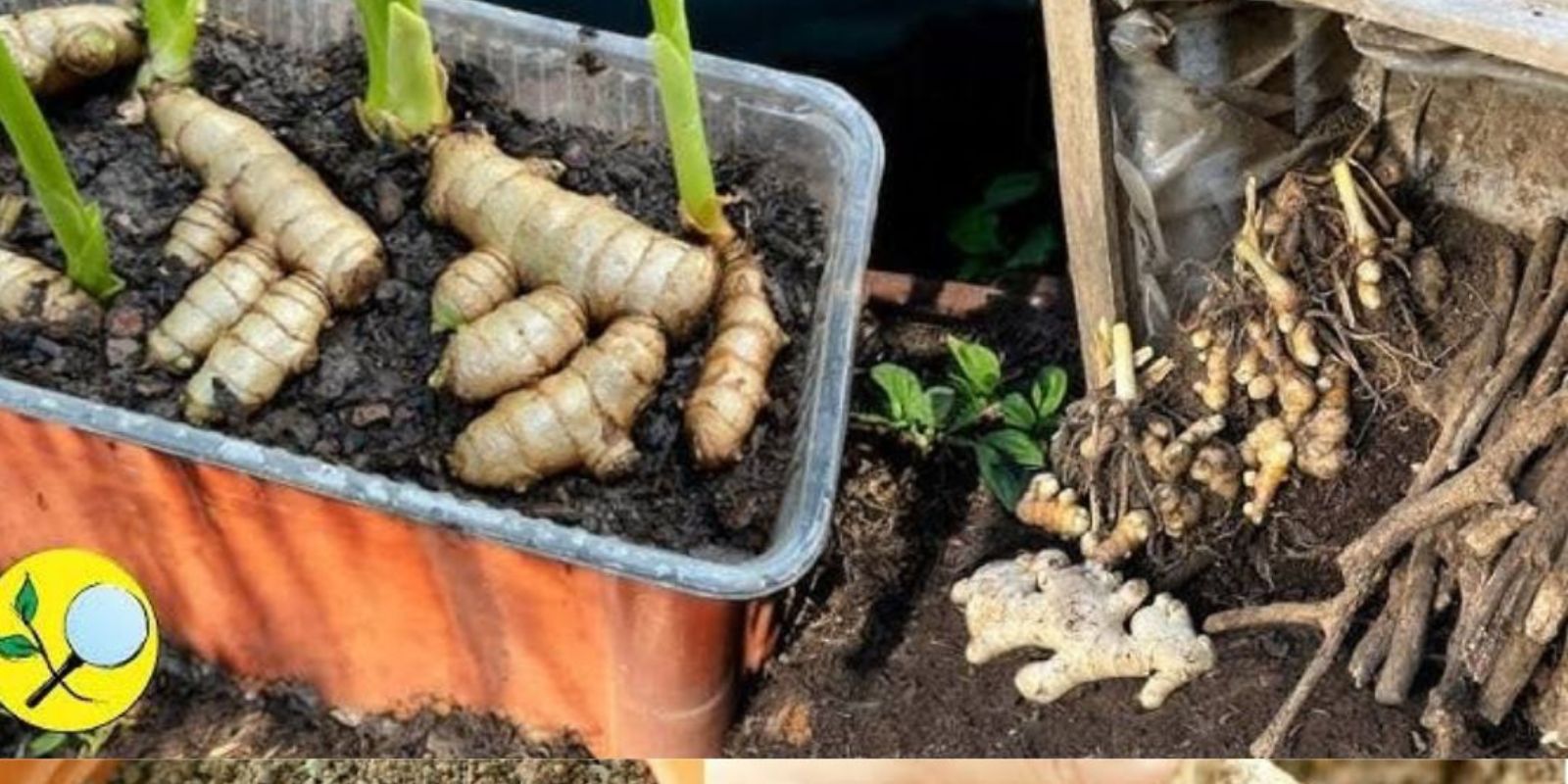Ginger and turmeric, two versatile and medicinal roots, are staples in many kitchens and health regimens. These plants are not only easy to grow but also thrive in compact spaces like a wooden box, making them perfect for home gardeners. This guide walks you through every step of growing ginger and turmeric at home, from preparation to harvest.
Why Grow Ginger and Turmeric at Home?
Ginger and turmeric are prized for their culinary and medicinal benefits. Ginger adds a zesty flavor to dishes and drinks, while turmeric is known for its vibrant color and anti-inflammatory properties. Growing them at home ensures a fresh, chemical-free supply, and the process is surprisingly simple.
Whether you’re an experienced gardener or a beginner, cultivating these tropical plants in a wooden box is a fun and rewarding project.
What You’ll Need
Before getting started, gather the following materials:
- A sturdy wooden box (at least 30 cm or 12 inches deep)
- Fresh ginger and turmeric rhizomes with visible buds
- Well-draining soil mix (equal parts garden soil, compost, and sand)
- Organic fertilizer
- Watering can or spray bottle
Step-by-Step Guide to Growing Ginger and Turmeric
1. Selecting and Preparing the Wooden Box
Choose a wooden box with adequate depth to allow the rhizomes to grow comfortably. A depth of 30 cm (12 inches) is ideal. Ensure the box has drainage holes at the bottom to prevent water from pooling, which could lead to root rot. If the box doesn’t have holes, drill a few evenly spaced holes and line the bottom with gravel or small stones to aid drainage.
2. Preparing the Soil
Ginger and turmeric prefer loose, well-draining soil. Create a mix using:
- 1 part garden soil
- 1 part compost
- 1 part sand
This mix ensures the soil retains moisture without becoming soggy. Adding a small amount of organic fertilizer to the mix will give the rhizomes a nutrient boost.
3. Choosing the Right Rhizomes
Select fresh, healthy ginger and turmeric rhizomes from a garden center or grocery store. Look for rhizomes with visible buds or “eyes.” These buds will sprout into shoots. Soak the rhizomes in water for 6–12 hours to rehydrate and encourage faster sprouting.
4. Planting the Rhizomes
Place the wooden box in a sunny location, as both plants require warmth and indirect sunlight to thrive. Lay the rhizomes flat on the soil surface, ensuring the buds face upward. Cover them with 5–7 cm (2–3 inches) of soil and water gently to settle the soil around the rhizomes.
5. Watering and Maintaining Humidity
Ginger and turmeric thrive in consistently moist soil. Water the plants regularly but avoid overwatering, as soggy soil can lead to rot. To maintain humidity, mist the plants with water daily, especially if you’re growing them indoors or in a dry climate.
6. Fertilizing
Feed your plants every 4–6 weeks with an organic fertilizer high in potassium. This helps support healthy growth and ensures a good yield. Avoid over-fertilizing, as this can harm the plants.
7. Encouraging Growth
As the plants grow, you may notice their shoots reaching 60–90 cm (2–3 feet) in height. Ginger and turmeric grow relatively slowly, so patience is key. Keep the area weed-free to prevent competition for nutrients.
8. Harvesting Ginger and Turmeric
- Ginger: You can start harvesting small pieces of ginger after 4–6 months by gently digging around the edges of the box. For fully mature rhizomes, wait 8–10 months when the leaves begin to yellow and die back.
- Turmeric: Turmeric is ready to harvest after 8–10 months. The leaves will also turn yellow and dry out, indicating that the rhizomes are mature. Carefully dig up the rhizomes, brush off the soil, and wash them thoroughly.
Tips for Success
- Location Matters: Place the wooden box in a spot with indirect sunlight and a temperature of 20–30°C (68–86°F).
- Avoid Overwatering: While ginger and turmeric like moist soil, excessive watering can lead to rot. Ensure the wooden box has proper drainage.
- Replanting Rhizomes: Save a few pieces of rhizome with buds after harvesting to replant and start the cycle again.
- Seasonal Care: If you live in a cooler climate, bring the wooden box indoors during winter to protect the plants from frost.
The Benefits of Growing Ginger and Turmeric
Growing these roots at home offers numerous benefits:
- Fresh and Organic: Enjoy pesticide-free rhizomes straight from your garden.
- Cost-Effective: Save money by cultivating your own supply of ginger and turmeric.
- Sustainable: Reduce your carbon footprint by growing food at home.
- Aesthetic Appeal: The lush green shoots add a tropical vibe to your garden or indoor space.
Common Mistakes to Avoid
- Using Poor-Quality Rhizomes: Always choose fresh rhizomes with visible buds for planting.
- Planting Too Deep: Covering the rhizomes with too much soil can delay sprouting.
- Ignoring Drainage: Lack of drainage in the wooden box can cause waterlogging and root rot.
- Neglecting Humidity: Without adequate humidity, the plants may struggle to thrive.
Why Use a Wooden Box?
Wooden boxes are ideal for growing ginger and turmeric because they:
- Provide excellent drainage
- Are portable, allowing you to move them for optimal sunlight
- Maintain consistent soil temperature
- Offer a compact solution for small spaces
Conclusion
Growing ginger and turmeric in a wooden box is a simple, rewarding project that brings fresh, flavorful, and medicinal roots right to your home. By following these steps and providing the right care, you’ll enjoy a bountiful harvest in just a few months.
Are you ready to give it a try? Share your thoughts or questions in the comments below, and let us know how your ginger and turmeric garden is growing!
🌱 #GrowGinger #GrowTurmeric #HomeGardening #DIYGardening #HerbGarden #SustainableLiving 🌿

